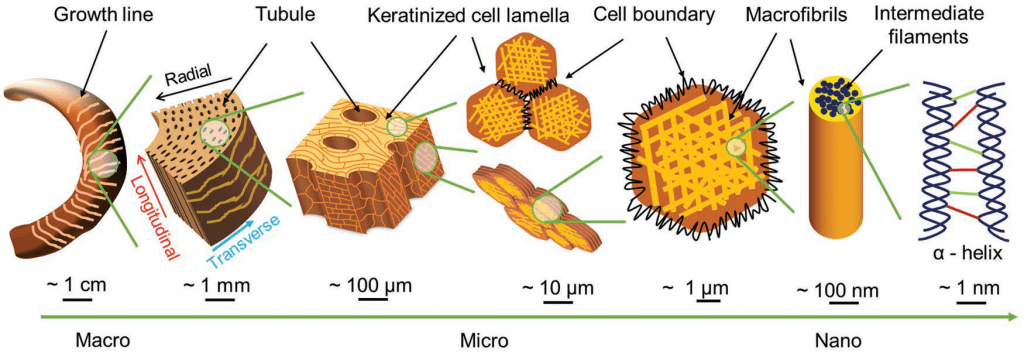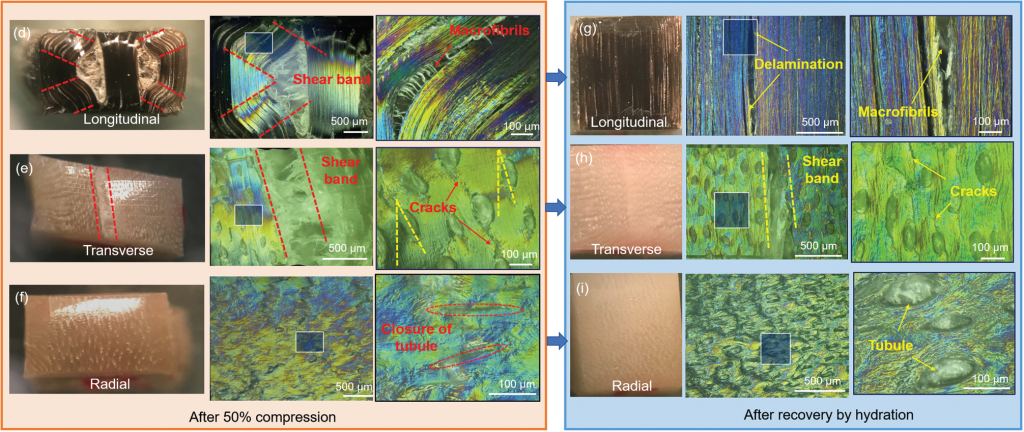Not having thumbs, rams are rarely observed on Tinder. In order to find a partner they tend to rely on more archaic means; like literally butting heads with other rams.
After butting heads, rams are often observed pushing their horns into mud or thrashing them against vegetation. An American team recently posed the question, how do these behaviors benefit the ram?
To understand why a ram might be sticking their horn in the mud after a fight, first its structure must be clearly delineated. Horns are made from the same material as hair or wings or skin; keratin.

The structure of ram horns.
Keratin is just the building block. It is able to produce wildly complex structures, that differ depending on the aperture of your view. The figure above shows the structure of a horn, starting on the nanometer scale and zooming out to the cm scale. In terms of the strength of horns, one of the key structures to note are the tubules that are visible on the millimeter scale.
The team acquired samples of rams horn and induced damage by placing them under stain. They then examined the effect of hydration on the damaged samples, hypothesizing that the water in mud or foliage may be aiding the healing process.
After hydration, tubules that had been closed by the damage were reopened. Tubules that had buckled were fixed, and keratin cells reoriented (see image below). On a molecular level, it is thought that these healing processes are driven by water molecules breaking hydrogen bonds. These bonds are crucial in making the alpha helices that can be seen in the figure above. By breaking bonds in the alpha helices, water allows the horn to reform and remodel itself.
This work offers a fascinating insight into the underlying reasons for a curious quirk of ram behavior. The authors also hope that a better understanding of the healing processes of natural materials might also have implications on the design of synthetic materials.

Photographs of horn before and after recovery by hydration.

















